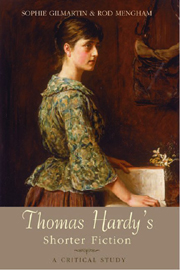2 - A Group of Noble Dames
Published online by Cambridge University Press: 12 September 2012
Summary
On 9 May 1890, Hardy posted off the six stories originally published as A Group of Noble Dames to the periodical, the Graphic, and immediately set off with Emma for his annual visit to London for ‘the season’. It would appear that he had no presentiment to trouble him that the arrival of the stories at the Graphic would cause offence and consternation – but Hardy never did seem to be troubled by such presentiments. As Michael Millgate writes, he exhibited a ‘curious incapacity to see his work as it might be seen by others, to appreciate its potential impact upon minds and imaginations not precisely attuned to his own.’ One can hear the exasperation in the editor William Locker's letter to Hardy from 25 June: he writes that the stories are
not at all suitable for the more delicate imaginations of young girls. Many fathers are accustomed to read or have read in their family circles the stories in the Graphic; and I cannot think that they would approve for this purpose a series of tales almost every one of which turns upon questions of childbirth, and those relations between the sexes over which conventionality is accustomed (wisely or unwisely) to draw a veil.
It is more than likely that those Victorian fathers most decidedly would have wished to draw a veil over the sentiments of Squire Dornell, father to Betty, the ‘First Countess of Wessex’ in the first tale.
- Type
- Chapter
- Information
- Thomas Hardy's Shorter FictionA Critical Study, pp. 53 - 92Publisher: Edinburgh University PressPrint publication year: 2007



